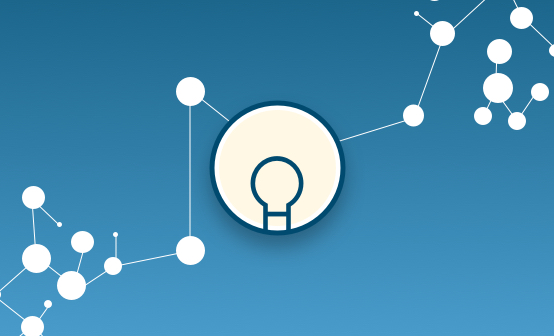
Leveraging log management for business intelligence
March 14, 2019

They say knowledge is power and today, there is no greater source of knowledge than data. It is well documented that businesses produce a vast amount of data whether it be in manufacturing, IT, UX, Marketing, Sales or Finance. Collectively, all of this data can provide you with business intelligence, enabling you to optimize decisions, improve collaboration, and increase overall performance. With the help of a data analysis machine, all of this data can be collected and visualized to show patterns, bottlenecks, and opportunities for improvement so you can optimize your strategic goals and develop a competitive advantage.More on the subject:
While normally, log management tools such as the ELK Stack are used to analyze, monitor, and troubleshoot your IT infrastructure, since it has the ability to collect and visualize any kind of data, it can be a really powerful tool for business intelligence as well.
The power of data
Today, we have data for everything. Google Analytics can tell you information like how many visitors are drawn to your website, which countries they originate from, and which search queries bring them in.
Salesforce can present and visualize on your leads and existing customers such as which company they work for, where they are located, the size of the company, etc. Your product’s data can show how your users are interacting with various features so you can get a better idea of which components to improve.
You can also use data to analyze cash flow to understand how you are spending money and how to best optimize your budget.
While all of this data is helpful, data in and of itself is not actionable unless it is organized to reveal patterns and insights. That’s where an aggregation and analysis tool like a log management platform comes in. A log management platform can analyze and visualize Big Data from all of your systems so you can better understand the story behind the data and gain valuable, practical insights.
Here are some examples of how:
Tracking leads and opportunities
Using a log management system, you can monitor key marketing and sales software systems such as Salesforce, Marketo, Hubspot, and others. All you have to do is hook up the system’s API to a log management platform in order to stream the system’s data and easily monitor trends such as which countries and industries bring the most leads, how many leads turn into paying customers etc.
This data can be visualized in tools such as Kibana so you can understand what these trends look like and develop a sales plan accordingly.
As a result, of this intelligence, you increase closed deals and streamline your overall sales approach.
Improving user experience
How do your users interact with your application? Are they finding value from all of the features? Is it operating too slowly? Are there specific buttons and user flows that are not easily understood?
You want to make your user journey as simple and understandable as possible. As such, your goal should be that your customers not only understand how to use your product, but gain the most valuable experience possible.
Monitoring your product through log analysis can help. You can ship user analytics on various features and actions which are recorded as log data. With this information, you can then create visualizations and dashboards to see the amount of usage of various features, a/b test user flows, and discover which users are interacting with each feature. Through this process, you can learn whether or not your system is slow, if there are features that are not being used, and compare various UX options.
As a result, you can develop a way to improve your product’s UX, so your customers gain value and continue to work with you for years to come.
Optimizing marketing campaigns
There are a variety of marketing initiatives you can measure with a log analytics platform. One key example is SEO. Since Google crawls all websites to develop their rankings, you need to make sure your site is in excellent shape to make it to the top of search engines.
Monitoring your site with log analytics can provide information such as if it has response code errors, whether or not Google’s algorithm is crawling everything you want to appear and rank in the SERPs, and if URL redirections are counted towards your site’s rankings. Using this information, you can improve your site’s search rankings and ensure more traffic comes to your site.
Measuring cash flow
At the end of the day, you run a business, and as such, your end goal is to earn a profit. Therefore, it is critical that you track cash flow in order to see what you’re spending money on, where your cash is coming from, and how you can optimize costs.
While surely your accounting software provides all of this information, it’s difficult to visualize it and present it to your team without business intelligence software. A log analytics platform can provide this visual layer with comprehensive dashboards and visualizations. With this, you can gain a greater understanding of where you should cut costs and invest more capital.
Monitoring IT infrastructure
Operate a website, app, or anything computerized? If so, your product most definitely produces logs. Logs offer a breadth of information about various events and processes as well as your overall IT performance including failures, security vulnerabilities, risks, and root-causes.
By analyzing this data, you can understand which processes consume too much data, what causes your system to malfunction, whether or not you’re vulnerable to security breaches, and so much more. Finally, you can troubleshoot such issues so that your system does not crash and negatively affect your customers.
Another common use-case is security. For example, say a hacker is trying to retrieve personal information from your users. While they try to break in and gather such information, your logs will show warning signs that something is “off”. With proactive log analysis, you can set up a system which recognizes these signs and can alert you if and when suspicious activities like this take place. You can then use this data not only to prevent attacks as they occur, but to develop a plan to protect yourself. Log data will show records of which vulnerabilities are exploited to execute attacks and even show signs of the method used.
Endnotes
In general, log management systems enable organizations to make the most out of data so your team can see patterns, make predictions, and tweak your strategies to drive success. Big plans can come from big data, but only when your team can organize it, make sense of it, and easily discover insights.
Of course, there are many other examples of using log analysis for BI, but beginning with the examples above will help you get started.
Do you use log analytics as part of your BI strategy? Let us know how in the comments below.




